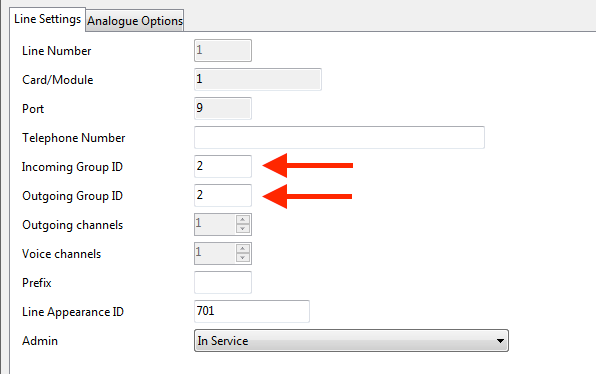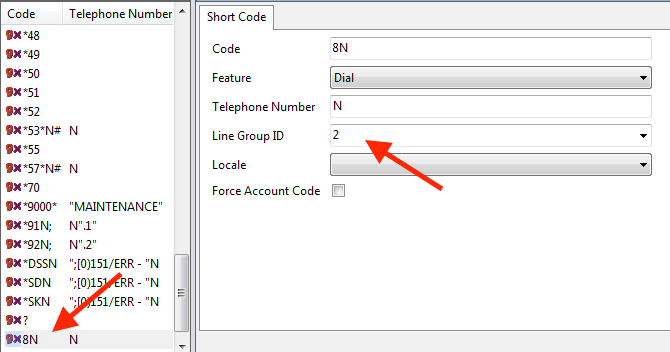Lines and Groups
Non DID (direct inward dial) lines must be routed to a destination, this is done by defining an Incoming Line Group.
Similarly, in order to dial out using a specific line, a short code referencing an Outgoing Line Group is defined.
The following applies to an analog line (or trunk), but the concept is the same for any line.
1A Line is assigned an Incoming and Outgoing Group ID, in this case both 2:

2In Incoming Call Route, we need to define the Incoming Group ID in order for it to ring somewhere.
Line Group ID 2 has been added, and selected. In the Destination tab, we can choose an extension where this group will ring.
200 Main is a default hunt group with all the stations in it. So, a line terminating at extension 200 will ring all phones. With Time Profiles we can create different destinations for different times of day.

3We need to define the Outgoing Group ID in order to use it to make a call:
Here we have added a new Short Code 8N, and assigned Line Group ID 2 to it. Therefore, dialling 8 followed by a number will select a line assigned to Line Group 2, and output the digits dialed (N).
